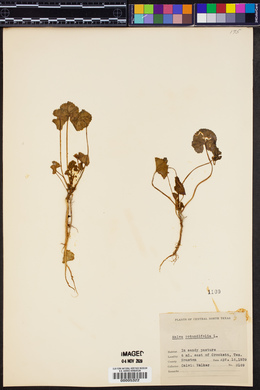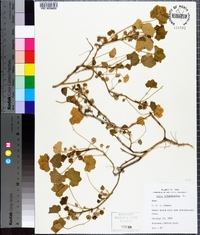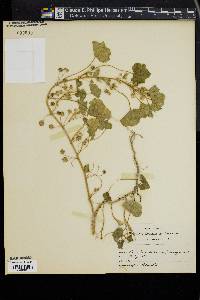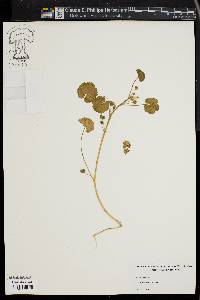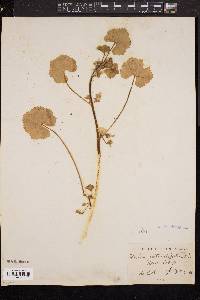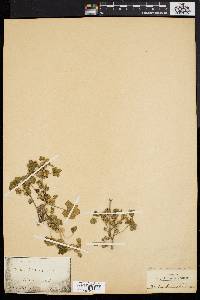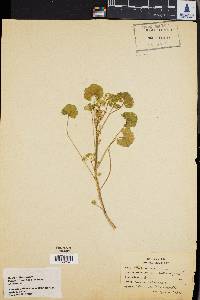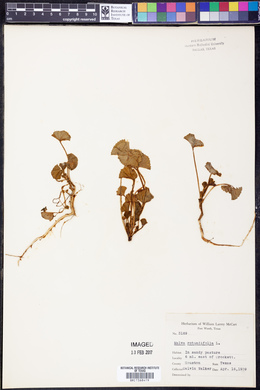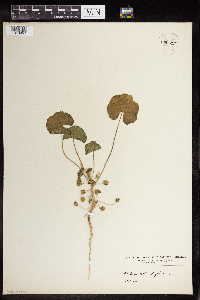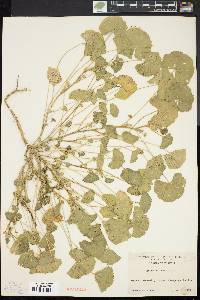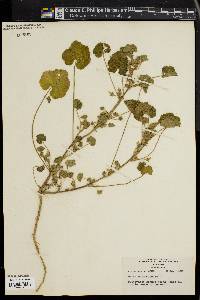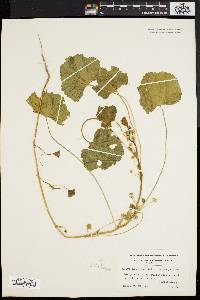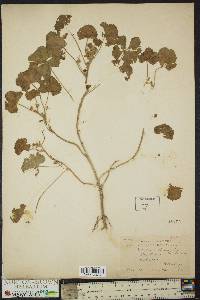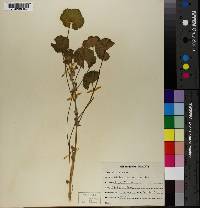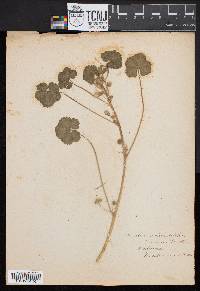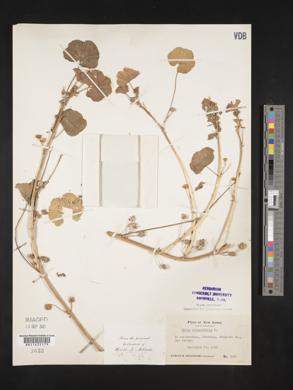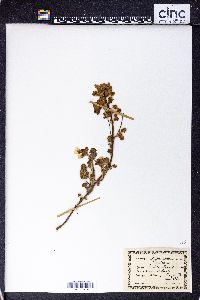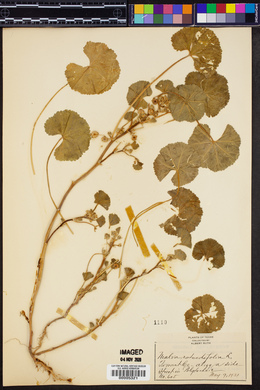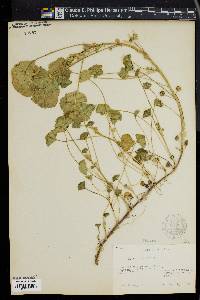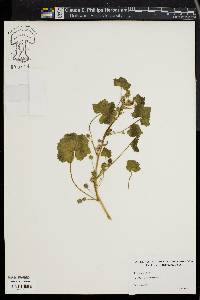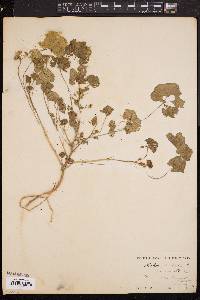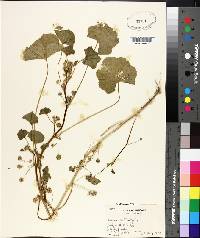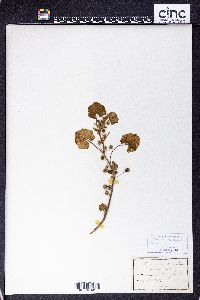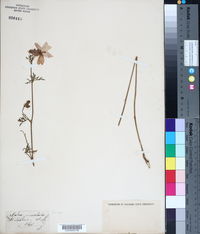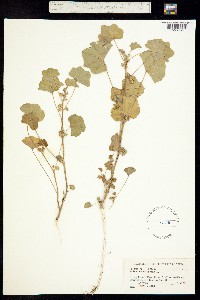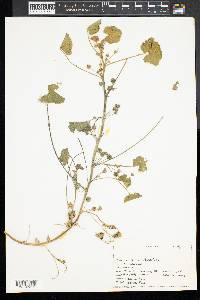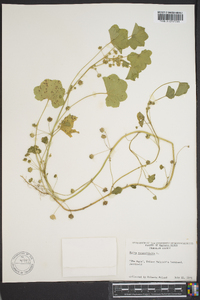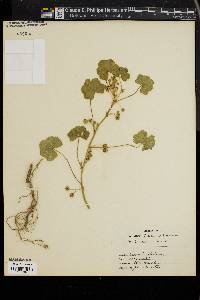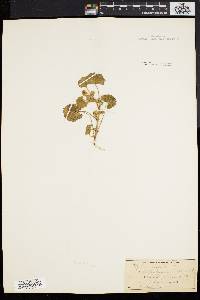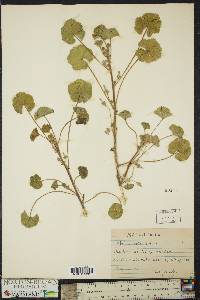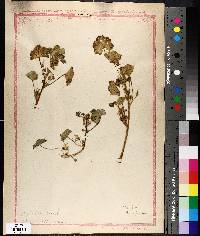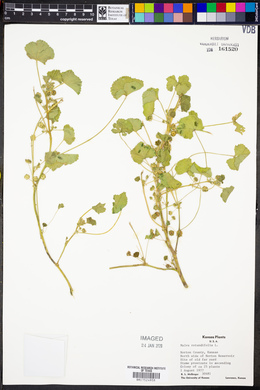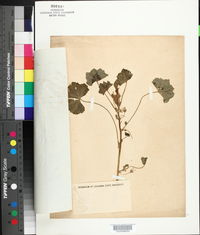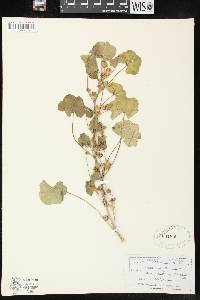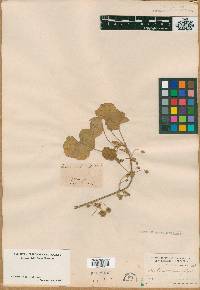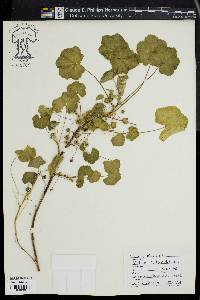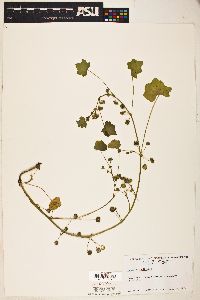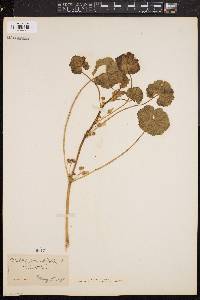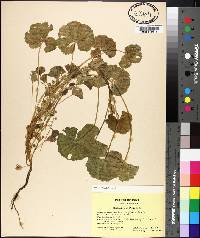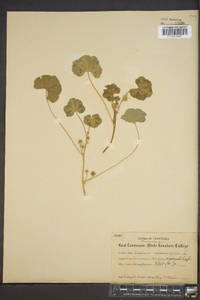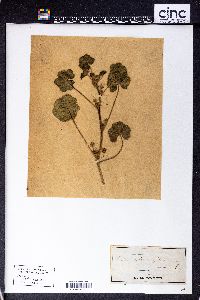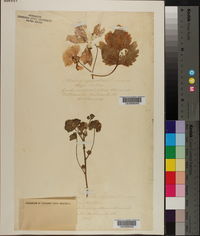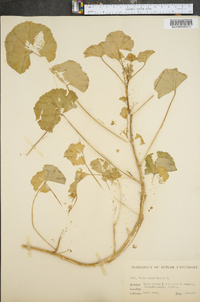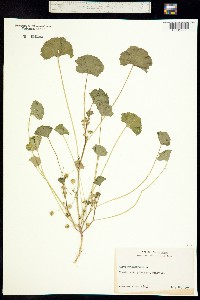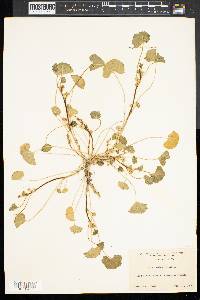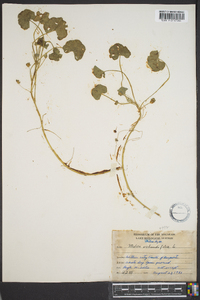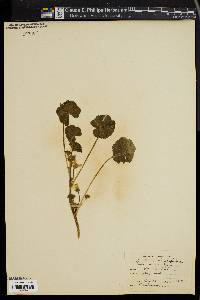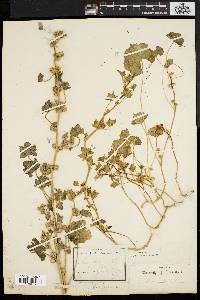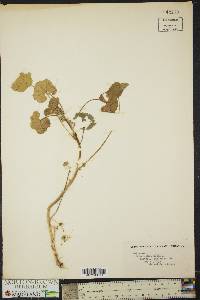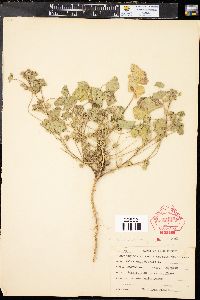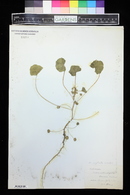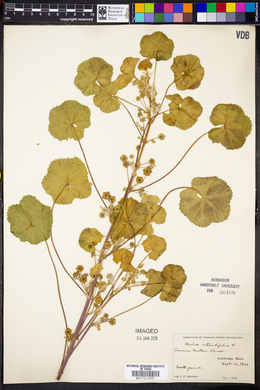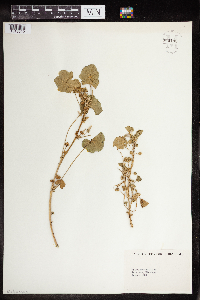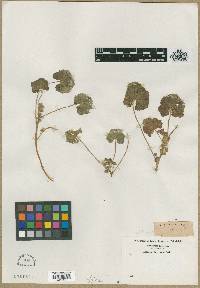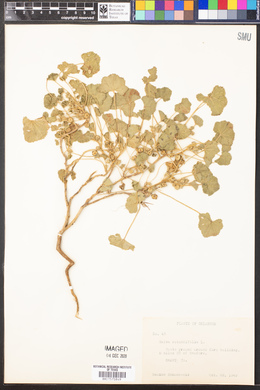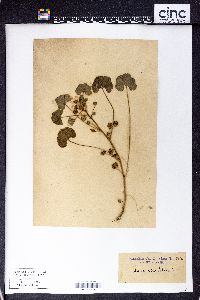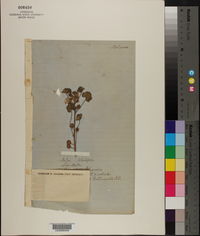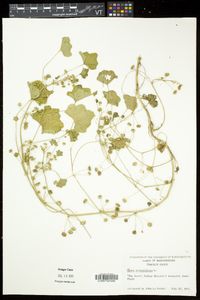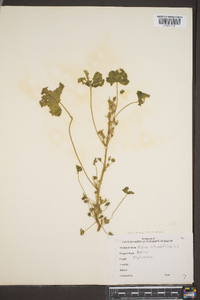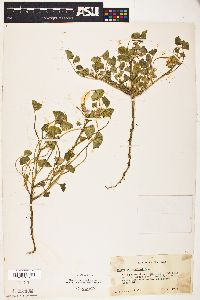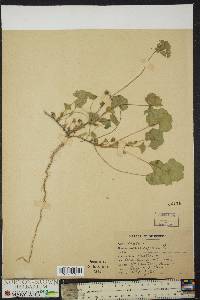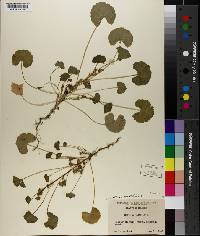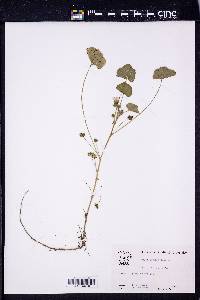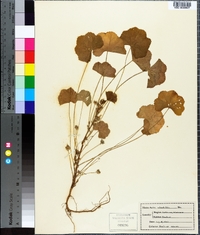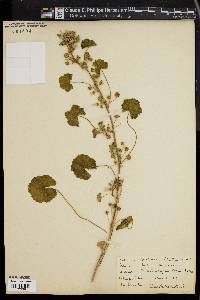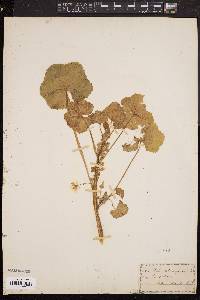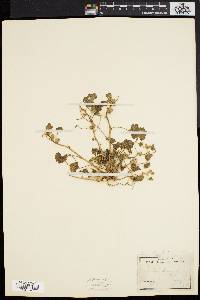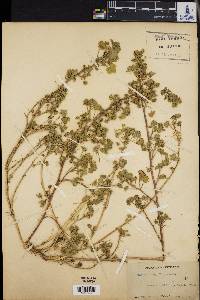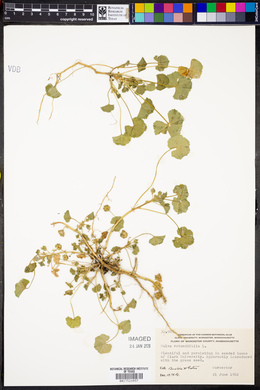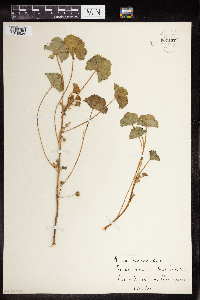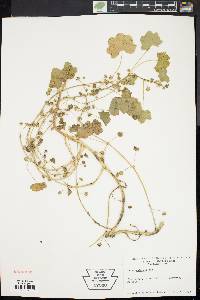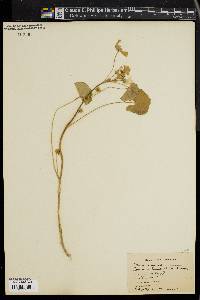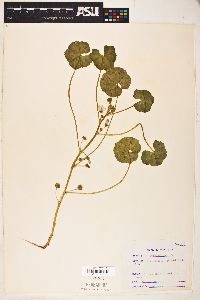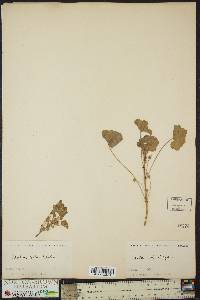
|
|
|
|
Family: Malvaceae
low mallow, more...Malva rotundifolia
|
Annual or short-lived perennial herb 20 - 50 cm tall Stem: typically decumbent, branched from near base, and usually short-hairy. Leaves: alternate, long-stalked, blunt-toothed, circular in outline, but with indented base, and five to nine, obscure, shallow, wide, blunt lobes (more so in upper leaves). Flowers: many, in clusters of three to ten in upper leaf axils, stalked (stalks at least 1 cm), pale pink, about 1 cm diameter, radially symmetric, with five somewhat spreading petals, and sepals immediately subtended by three, linear bractlets. Sepals: five, but fused for up to half their length, then separating into five widely triangular lobes fringed with long slender bristles. The calyx as a whole is about the same length as the petals, and it mostly encloses the fruit, though it does not enlarge much after flowering. Petals: five, pale pink, hairy at base, 0.4 - 0.5 cm long (scarcely longer than sepals, if at all), narrowly heart-shaped to triangular with narrow base and widening to outer edge, which has a fairly shallow center indentation. Stamens: numerous, but filaments fused into an elongate tube with the anthers protruding near the top. Pistil: enclosed by the stamen tube, with eight to eleven superior carpels (ovule-bearing structures), eight to eleven slender styles coming up through center of stamen tube, and ending with exserted, slender stigmas facing inward. Fruit: a ring of eight to eleven, one-seeded, hard, dark, almost hairless, strongly wrinkled-veiny and pitted, about 1 mm tall, very short and squat, beakless, wedge-like segments (mericarps) mostly enclosed by the persistent sepals atop at least 1 cm long, sometimes reflexed stalks. The mericarps typically separate from each other for dispersal, but do not open to release the seed (indehiscent). Similar species: Malva rotundifolia is most similar to M. parviflora, but that species tends to be more upright or at least ascending, it has mericarps with prominent wings on their angles, and the fruit stalks are always under 1 cm long. Also similar is M. neglecta, but the mericarps of that species are not wrinkled or pitted but are densely covered with short soft hairs, plus the petals are obviously longer than the sepals. Flowering: June to September Habitat and ecology: Introduced from Europe, preferring waste places and roadsides; only known in the Chicago Region from Lake and Grundy counties, IL. Occurence in the Chicago region: non-native Notes: The more correct name for this species may be M. pusilla Sm., as is used in Europe from where it is native. Etymology: Malva means Mallow. Rotundifolia means rounded leaves. Author: The Field Museum Much like no. 5 [Malva neglecta Wallr.] in aspect; pedicels often shorter, but generally at least 10 mm in fr; pet mostly 4-5 mm, slightly if at all longer than the sep; mature carpels 8-11, commonly 10, glabrous or hairy, conspicuously rugose-reticulate on the back and radially veined on the lateral faces, the margins sharply angled but not winged, the whole head of carpels approximately circular in outline; central depressed area one-fifth the diameter of the head; 2n=42. Native of Europe; widely established as a weed in w. and s. U.S., and local with us. (M. pusilla) Gleason, Henry A. & Cronquist, Arthur J. 1991. Manual of vascular plants of northeastern United States and adjacent Canada. lxxv + 910 pp. ©The New York Botanical Garden. All rights reserved. Used by permission. |



